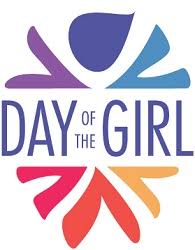Educating Girls: A Major Solution for Climate Resiliency
Oct 11th, 2018 | By admin | Category: Youth RightsBy Suzanne York.
At first glance, the recent UN Intergovernmental Panel on Climate Change (IPCC) report on global warming may not seem to have much to do with the International Day of the Girl, observed on October 11th.
But climate change has a lot to do with girls, and especially the rights of girls. For one thing, our actions today – or lack of actions – affect the future of young girls everywhere (and yes, boys too). They will inherit a world already bearing the brunt of a changing climate.
And as women and girls are often on the frontlines of climate change, their lives will be made that much harder due to global inaction to address this pressing challenge.
Education is a Climate Solution
Last year’s best selling book, Drawdown: The Most Comprehensive Plan Ever Proposed to Reverse Global Warming, ranked the top solutions to climate change and ranked girls education as solution number six and family planning as solution number seven.
Drawdown’s authors suggests that investing in family planning, combined with girls’ education, could save 123 gigatons of carbon dioxide and be a cost-effective solution. It’s a sensitive comparison, linking reproductive rights and human rights with carbon emissions. And while Drawdown recognized that it’s inappropriate to monetize a human right, it still effectively (and without involving any type of coercion) addressed the connection between girls’ education and climate change. It’s a matter of rights.
In addition to Drawdown’s work linking the importance of the role of girls’ education with climate change action, a report by the Brookings Institution also came to similar conclusions. According to Brookings, educating girls is one of the most effective but overlooked ways to mitigate climate change.
Take, for example, rates of child marriage. Young girls are “at greater risk of early marriage in times of weather-related crises, because their dowries can help ease the burden of scarce household resources. Girls are often also the first to be withdrawn from school or attend school less frequently during times of drought so that they can complete household responsibilities like fetching water.”
In Malawi, some people estimate 30% to 40% of child marriages are due to poverty caused by flooding and droughts due to climate change.
Reproductive Rights and Resiliency
Not to be overlooked is that educated girls tend to have smaller families. A woman with 12 years of schooling will have four to five fewer children than a woman with little or no schooling. A recent World Bank report found that failure to educate girls affects population growth and costs the global economy $15 to $30 trillion.
Promoting girls’ reproductive rights in order to ensure equitable climate action is also another key solution made by the Brookings researchers. This focus on the reproductive health and rights of women and girls “pushes current discussions on ‘female education,’ women’s fertility, and population growth to consider how the underlying lever of change is education’s impact on girls’ and women’s control over their reproductive lives.”
The authors make the case that “the connection to female rights and agency has important implications not only for providing girls and women the opportunities to develop their own human, social, and political capital, but also for ensuring more equitable climate action.”
The organization Campaign for Female Education, or Camfed, also makes the link between educating girls and climate resilience. Writing for the website Earth Overshoot Day, Camfed noted that “Population growth increases the competition for resources and weakens our ability to deal with climate change. By tackling birth rates through investment in girls’ education, we can achieve the greatest beneficial impact: both improving lives while also making those populations, and the world, more resource secure.”
Women and girls with an education can better “access and share the skills and knowledge needed to mitigate the effects of resource constraints and climate change.”
Camfed works to break down barriers that prevent girls from accessing and staying in school and helps them complete their education, as well as provide post-education training and leadership development.
Check out this trailer of a documentary called “Women Are the Answer” for a preview of how girls’ education is changing lives.
Supporting girls’ education is an obvious positive investment, with benefits to the girl child, her family, her community and even the planet. Which is why more and more NGOs, multilateral institutions and even governments now include educating girls in their top solutions to reverse global warming. That’s something to celebrate on this 2018 International Day of the Girl.
Suzanne York is Director of Transition Earth.


![[photo: UNICEF]](http://populationgrowth.org/wp-content/uploads/2018/10/unicef-2-1024x455.jpg)